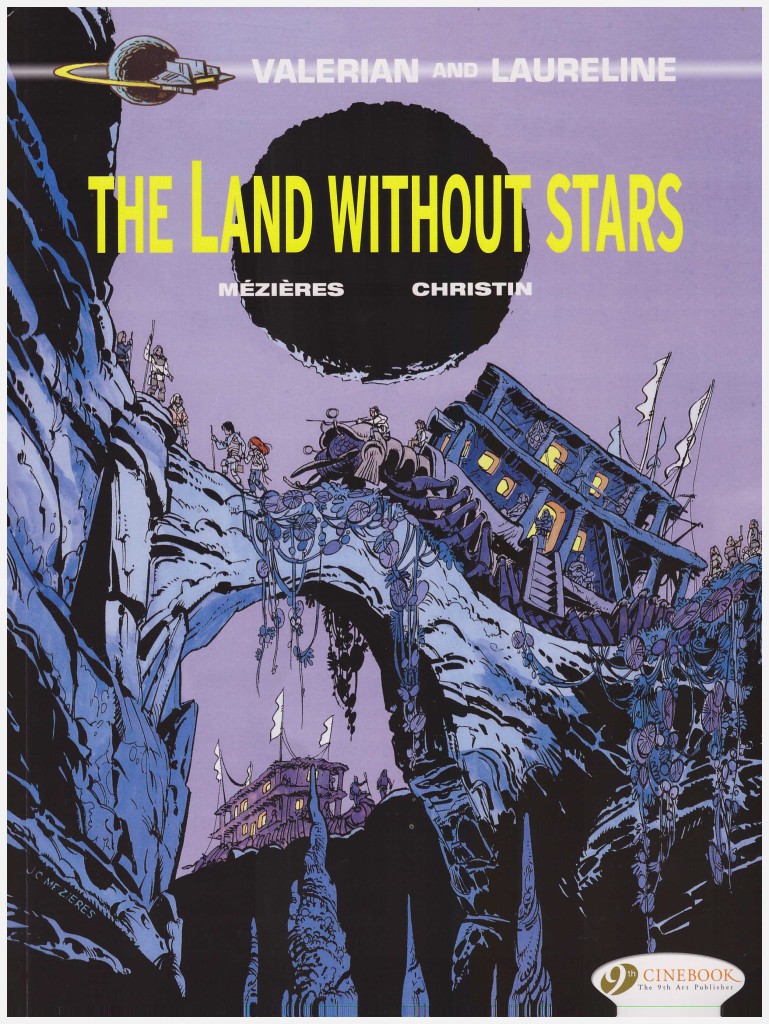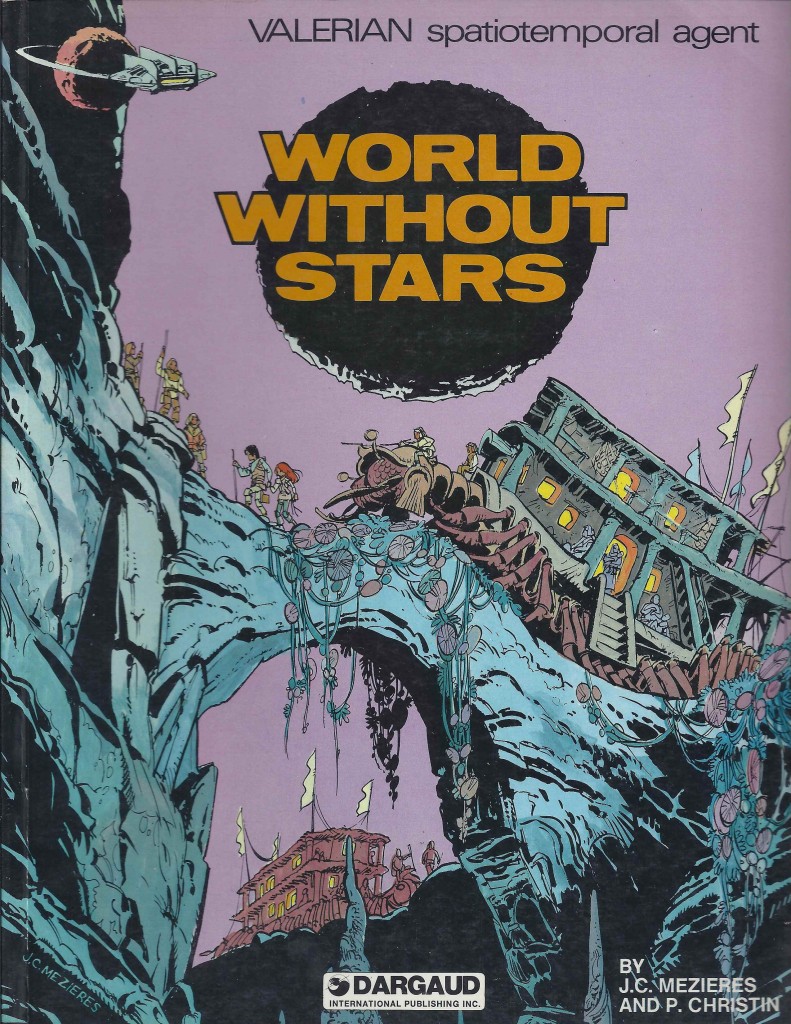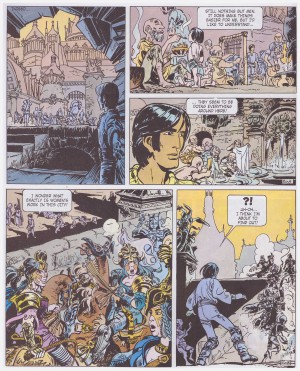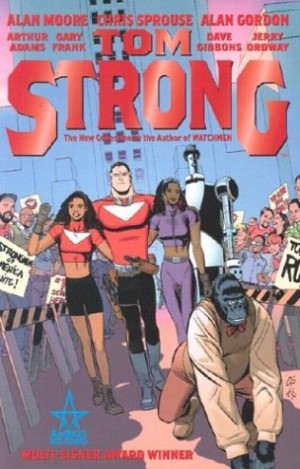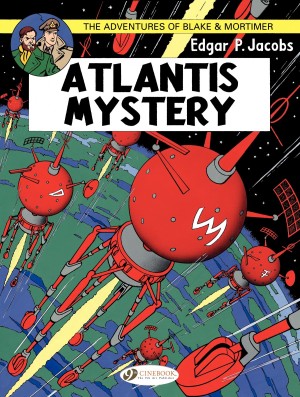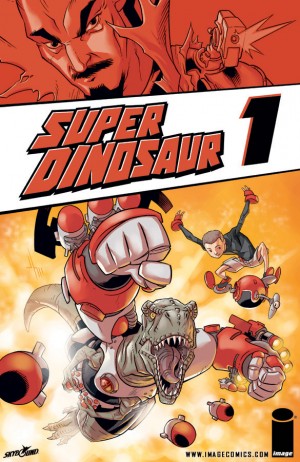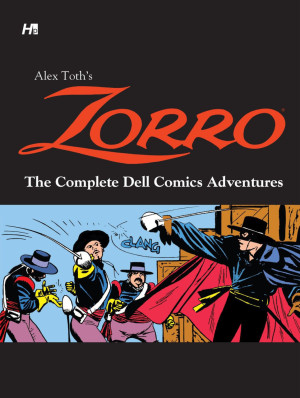Review by Frank Plowright
By today’s standards the primary plot of The Land Without Stars is dated, simplistic and daft, but it’s surrounded with ingenious details. Writer Pierre Christin is beginning to think beyond science fiction adventure into the way that societies are organised, and the books are progressing into something of greater interest. Laureline, so much window dressing in the previous two books, is provided with a more significant role, and artist Jean-Claude Mézières is playing a greater part in constructing the civilisations.
We begin with Spacio-Temporal agents Valerian and Laureline about to leave four newly colonised planets at the furthest ends of known space, beyond which there’s only a black emptiness. From that emptiness, though, a moving planet is spotted heading on a collision course and likely to end the colonies before any colonisation has occurred. Valerian and Laureline set out to prevent the impact. The manner in which this eventually occurs is excellently conceived, and extremely underplayed. One can only imagine the fraught tension of the final two pages if undertaken in a Star Trek episode.
The first people Valerian and Laureline encounter on the runaway planet can be seen on the cover, a nomadic harvesting society transporting their homes on the backs of giant insects that they shepherd around. It’s a fantastic piece of conceptual art from Mézières, produced for what’s largely incidental detail, which gives an insight into his commitment. His pages are very crowded and busy, and not helped by very primitive colouring. A page of purple wash disguises his detail, rendering much of it worthless.
The nomads harvest naturally explosive minerals that they then sell to to both parties involved in a war that’s been perpetuated longer than anyone can remember. Men run the Valsennar society, subjugating women and waging war on the Malka, a matriarchal society where men are the second class citizens. No, subtle it’s not, and how it’ll be settled is obvious as soon as the groups are introduced. On the positive side, Christin is pacing the plots more proficiently, and there’s never the feeling that The Land Without Stars was originally serialised a page at a time, and those little details are great. The Malka fire scorpions from containers on their wrists, Laureline’s reliance on technology diminishes her practical skills, boulders are strapped to flying insects to be released as weapons, and each society makes it priority to ferment alcohol.
The Land Without Stars was available in the early 1980s via French publisher Dargaud’s partnership with Hodder & Stoughton in the UK and under the Dargaud imprint in the USA, titled World Without Stars. The Cinebook translation is far better, idiomatic rather than literal. The next book, Welcome to Alflolol, also saw a 1980s English language release, and both can be found in the second hardcover volume of Valerian: The Complete Collection.
